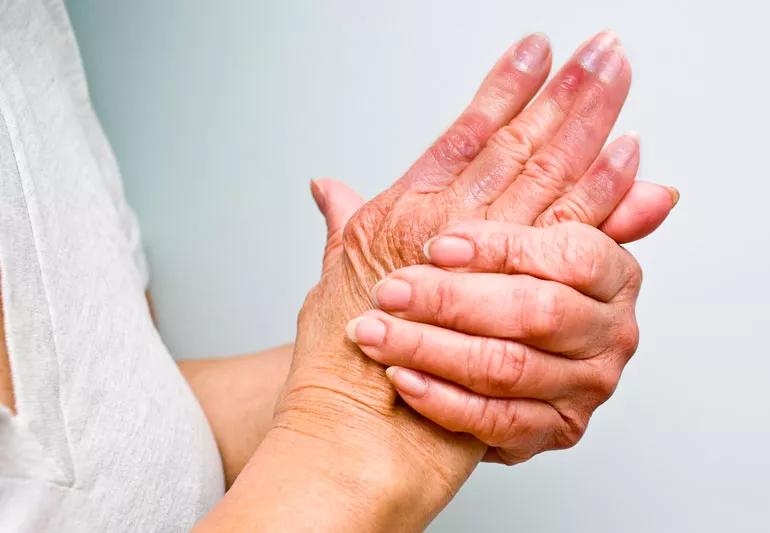Cold, damp conditions can cause this inflammatory skin condition

Brr! You know it’s important to bundle up when you go outside in frigid conditions to protect your body from hypothermia and your skin from frostbite.
Advertisement
Cleveland Clinic is a non-profit academic medical center. Advertising on our site helps support our mission. We do not endorse non-Cleveland Clinic products or services. Policy
But there’s another, lesser-known cold-weather ailment to be aware of: pernio.
Pernio, more commonly known as chilblains, is a kind of skin inflammation caused by an abnormal response by the blood vessels after exposure to cold and damp conditions.
Chilblains appear as itchy, inflamed bumps on the skin – usually on the extremities, such as the fingertips or the toes. Less commonly they can affect the nose and ears. They can appear a few hours after exposure to cold weather.
“These tend to be reddish or purple-blue skin lesions, and they cause intense itching or burning pain,” says vascular medicine specialist John R. Bartholomew, MD.
In extreme cases, the bumps can blister and ulcerate.
Young women and children are most likely to get chilblains, but anyone who spends time outside in conditions that are cold and damp is at risk.
When you’re exposed to cold, the blood vessels and arteries that are close to your skin tighten to conserve heat. When you return to a normal temperature, they expand. Chilblains are thought to be caused by inflammation resulting from that process.
The itchy bumps that arise can last anywhere from a few weeks to all winter. Dr. Bartholomew says that for some people, they return each year in late fall or early winter.
Advertisement
Although they’ll usually go away without causing permanent injury, Dr. Bartholomew still recommends that anyone who suspects they might have chilblains see a doctor. Sometimes, they are a manifestation of an underlying disorder such as lupus. Your doctor can order blood tests to rule out possible associated conditions.
Doctors can also prescribe an ointment to apply to the skin or an oral medication to help.
Of course, though, the best course of action is to take precautions to prevent chilblains in the first place. That means protecting your body from the cold by wearing appropriate outerwear.
And, it’s important to remember that dressing warm doesn’t just mean thick socks, boots and gloves. “If you don’t wear a hat or a scarf, you’re going to lose heat from that part of your body, which can cause you to get vasoconstriction in other parts of your body where you don’t want it,” Dr. Bartholomew explains.
Also be mindful of keeping your hands and feet dry. “It doesn’t have to be an extremely cold temperature – dampness can be a problem as well,” Dr. he says. “Some people sweat in their socks, so they may need to change their socks if they get damp.”
Advertisement
Learn more about our editorial process.
Advertisement

Keeping your skin dry, wearing the right clothes and investing in anti-chafe products can help minimize skin irritation

Working with a therapist, staying active and practicing mindfulness are just a few ways to help manage stress

Using precautions like bandages and lubricants can help you run away from this uncomfortable condition

Laser hair removal, laser surgery, excision and steroid injections are all potential treatment options

Use products that reduce inflammation without causing irritation and avoid fragrances, dyes and exfoliators

Nutrition plays an important role in managing this chronic inflammatory skin disease

Aloe vera, warm compresses and diet adjustments can help alleviate symptoms

Popping or prodding at these cysts could lead to infection

Start having sex about 72 hours before ovulation, then at least every other day during your fertile window

Attachment theory suggests that your earliest relationships shape connections throughout your life

It isn’t a recognized mental health disorder, but research shows that problematic social media use can negatively affect your mental health, self-esteem and sleep